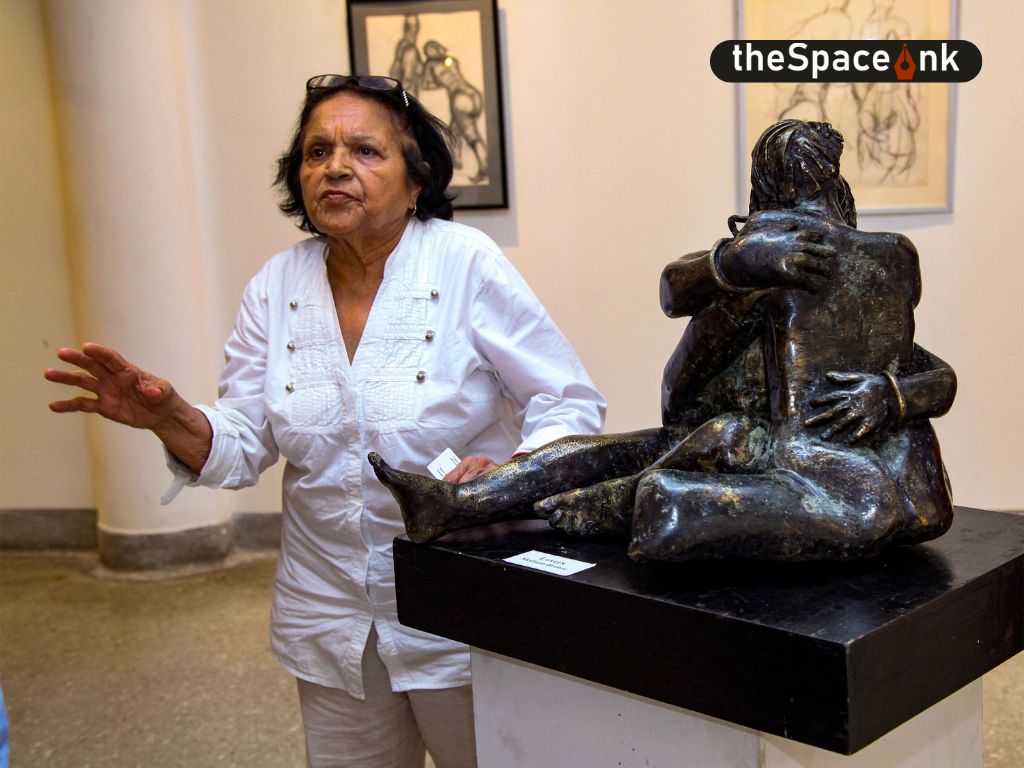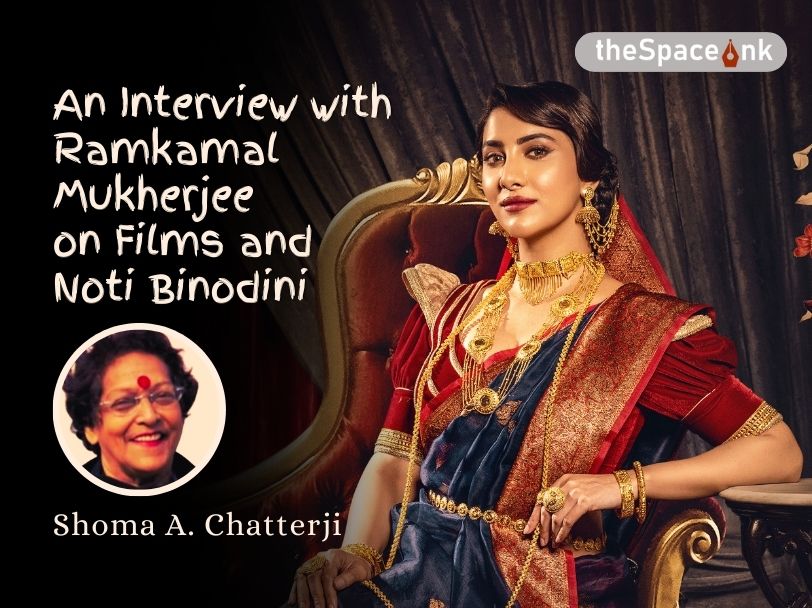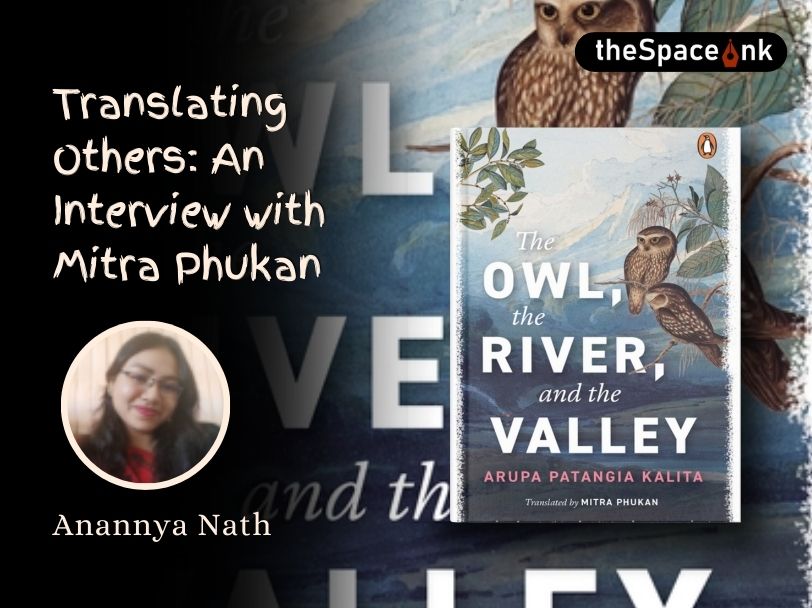Kripal Kalita’s debut feature, Bridge, is a film of rare integrity and beauty that affirms the triumph of the human spirit. Shantanu Ray Chaudhuri spoke to the director.
Watching a wedding procession in the distance, a TV reporter from Guwahati asks the film’s protagonist, Jonaki (Shiva Rani Kalita), ‘Why does the bride arrive in the daytime here?’ The girl replies, ‘Because there’s no bridge to cross the river – how will the groom travel at night? Hence they get married during the day and bring the bride along.’ Earlier in the film we have seen her brother, Bapukon (Partha Pratim Bora), bound for school, having to strip himself and carry his trousers and books on his head to cross the river. Later, we are witness to a pregnant woman in the throes of labour pain going through the travails of crossing the river on a makeshift raft. In three understated sequences of great power, debutant filmmaker Kripal Kalita underscores the essence of his film. However, the absent bridge in Kalita’s remarkable film, Bridge, is not just a material need that makes everything we take for granted – a wedding, an education or medical care – a superhuman everyday fight against the elements. The bridge here is metaphorical. Its absence impacts dreams and ambitions.

What’s special about Bridge is the way the director eschews all melodrama in the telling. The tone – even in the heartbreaking climactic flood that sweeps the village away and unleashes calamity on Jonaki’s family – is almost matter-of-fact, unsentimental, throughout. There is no underlining the poverty of these lives despite the director’s unerring eye for detail: an old battered tin trunk doubles up as a table when a guest is expected at the house. So, when Jonaki says who will look after her family if she gets married or rhetorically, playfully, enquires of the TV reporter, ‘Who will marry me, will you?’, there is no self-pity in those words, just heroic stoicism. Or when in the aftermath of Jonaki’s aborted wedding, Bapukon rails and rants at the river, the only time a character in the film loses his equanimity, the effect is that much more pronounced. The director follows it up immediately with a quiet sequence of great eloquence – the children and their mother sitting by the river, watching the waters flow by. Kalita also informs the film with small doses of humour: in a village that is almost an island because of the lack of a bridge connecting it to the world outside, the local MLA’s party symbol is a ‘boat’ – talk of the many ironies of life.
Episodic in structure, and shot entirely on location, the film unravels with the leisure of the changing seasons. Kalita has the confidence to do away with the need for a story per se, focusing instead on the minutiae of life, its ebb and flow. In this endeavour he is immensely aided by Ramen Rabha’s cinematography which beautifully captures the changing palettes of this region over the seasons. Consider, for example, that gorgeous closing sequence as Jonaki sets about rebuilding their home, and the camera pulls up to reveal the entire landscape. In one shot, you have both the personal and the universal: Jonaki and countless like her live on those lands by the river, fight its vagaries, are uprooted by it time and again, and yet in a triumph of indomitable human spirit, they return to reclaim their place every time. There’s also the innovative sound design which relies entirely on natural sounds, doing away with background music altogether. At the heart of Bridge, however, lies Jonaki, played with remarkable felicity by Shiva Rani Kalita, who seems born for the role. This is arguably one of Indian cinema’s finest performances in recent times, fetching the actor the award for best debutant at the Ottawa India Film Festival.
Almost 65 years ago, cinema lovers were introduced to a brother and sister facing grinding poverty in a village in Bengal, and finding in the midst of their travails a shot at something approximating happiness. It’s a different state, a different village and different times – you have mobile phones and Facebook now even in this village cut off from the world outside – and yet Jonaki and Bapukon could well be Apu and Durga’s soul-siblings and Kripal Kalita’s film a bridge to the masterpiece that put India on the map of world cinema.
Shantanu: Tell us something about your journey into cinema.
Kripal: I was born in a family of farmers. I have been associated with theatre as an actor and director since 1992 and thereafter as an actor and assistant director in television serials since 2000. In the year 2004, I directed a video film, Agnibrishti. Red to Black, a short film I directed, won the Assam State Film Award in 2008. Over the years, I’ve directed more than 18 short films and more than 12 serials for Doordarshan and private TV channels, apart from over 60 plays. I am an A-grade artist in the drama section of All India Radio, Guwahati. Bridge is my first full-length feature film.
Shantanu: As a first-time filmmaker, what is it that attracted you to Bridge – it’s not a commercially viable or mainstream subject?
Kripal: The core idea behind Bridge is ‘life must go on in any situation’. I have tried to depict this through the struggle of a teenager. Today, with the onslaught of competition, consumerism, easy and luxurious living, many people of different age groups, especially the young, sometimes take the ultimate decision – to kill themselves. A diametrically opposite picture is projected in Bridge. After losing everything, the young girl goes about recreating her life, is committed to educating her brother. I have relied on things that we experience on a regular basis in Assam. Floods are a perennial source of devastation in the state. It is the same every year, with huge loss of livelihood and resources. I wanted to highlight this and bring it to the attention of the national and international community. And at the same time convey the story of the astonishing fortitude of the people who inhabit this land.

Shantanu: Give us an insight into some of the challenges you faced with the film…
Kripal: The making of Bridge was not at all easy. If you notice, the film depicts the many seasons we experience in Assam. It took us 14 months to complete the entire shooting so that we could capture each of the 6 seasons. The main location was 500 kilometres away from Guwahati, so it was tough and expensive to cart the whole unit every time we wanted to shoot. We were operating on a restricted budget. The financial assistance offered by one of our producers, Rama Kumar Das, was not sufficient, and we had to arrange the rest of money by ourselves. Finding the right actors was another huge challenge – we needed faces who matched the temperament and vision of the script, and regular actors in the industry did not fit the bill.
Shantanu: The brother-sister duo reminded me of Apu and Durga in Pather Panchali. How did you come about casting them?
Kripal: Both Shiva Rani and Partha Pratim were making their debuts. Casting them involved a long and arduous search. We covered various villages in Assam looking for the actors. It was especially difficult to find someone to play Jonaki. Shivani was selected from among almost 300 girls. She was a college student residing in a town, and we held a special workshop of 3 months to prepare her for the role. Actually, the entire cast and crew comprises newcomers. Even the cinematographer is a wedding photographer. Working with people without any prior knowledge or experience of acting and films was immensely challenging.
I have tried to depict this through the struggle of a teenager. Today, with the onslaught of competition, consumerism, easy and luxurious living, many people of different age groups, especially the young, sometimes take the ultimate decision – to kill themselves. A diametrically opposite picture is projected in Bridge. After losing everything, the young girl goes about recreating her life, is committed to educating her brother. I have relied on things that we experience on a regular basis in Assam.
Kripal Kalita
Shantanu: I loved how you captured the expanses of the fields and the seasons. There are a number of haunting sequences, the oxen returning home, the distant cloud-heavy skies with Jonaki sitting on the field, the mother dying and the children covering her body and leaving it behind. Tell us something about the visual palette and the cinematography.
Kripal: As a son of a farmer, I know the pros and cons of farming, both the beauty and agony of it. This practical experience has been of great help while making the film. The flood scenes and the death of the mother were shot in the wake of actual floods. It took us 8 hours to shoot those 2 minutes of footage. Only those who have practically experienced the devastation caused by floods can feel the pain.
Shantanu: Can you elaborate on the stunning final sequence, from the time Jonaki comes across the tin trunk to the time sitting on the top of the hut she is constructing, and you pull up and pan across the whole expanse…
Kripal: That sequence is the DNA of the film, encompassing its theme. Jonaki gets a little emotional finding the vermilion in the box swept away in the flood. She smears it in her hair parting as a protest against a hostile, patriarchal society. After sending her brother to school, she gets busy reconstructing their house, again at the bank of the river. She has lost everything but she is not about to give up. And then we pull out to reveal the entire landscape.
Shantanu: The only time the film felt like deviating from the truth at the core is when we have the outsiders come in – Parag, and particularly Manik. Do you think they are important to the narrative? The elements are so weighed against the protagonists, did we need the character of Manik and that sequence where he attacks her?
Kripal: In Bridge, Parag is the symbol of the upper middle-class urban fraternity, who hardly possess empathy for people beneath their station. They hide their weakness behind their ineffectual concerns. On the other hand, Manik represents the group of people who suck the blood of their very own fraternity. Characters like Jonaki have been molested from time immemorial – both mentally and physically. For them, dire struggle is an inevitable part of life and living, and Parag and Manik are two sides of the same coin, exploiting their vulnerability.
Images courtesy: Shantanu Ray Chaudhuri
Shantanu Ray Chaudhuri is an editor, publisher and writer, with a keen interest in films, music and poetry. As an editor he has worked with leading Indian authors like Arun Shourie, Gulzar, Kiran Nagarkar, Manu Joseph and others. Books commissioned and edited by him have won the National Award and the MAMI Award for Best Writing on Cinema. His articles have appeared in Film Companion, Cinemaazi, The Daily Eye, Outlook and The Wire.







